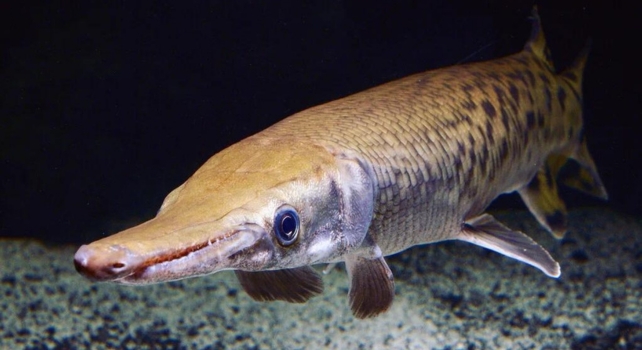Research into an ancient family of pointy-nosed fish known as gars has found the first solid evidence that a biological mechanism can explain their status as ‘living fossils’.
Some living organisms have exceptionally low species diversity and physical variation from ancient ancestors, leading Darwin to create the term in 1859. But clear evidence of a mechanism behind living fossils hasn’t existed before.
“Our paper shows that living fossils aren’t simply strange accidents of history but provide a fundamental demonstration of the evolutionary process in nature,” says Yale University evolutionary biologist Chase Brownstein.
“It not only helps us better understand the planet’s biodiversity, but potentially could one day be applied to medical research and improve human health.”
Brownstein and colleagues from the US and China found two different species – longnose gars (Lepisosteus osseus) and alligator gars (Atractosteus spatula) – can produce fertile hybrid offspring, in spite of 105 million years passing since their last common ancestor.
Horses and donkeys last shared a common ancestor just 4 million years ago. While they can pair to successfully produce offspring known as mules, the hybrid is generally infertile. The team found gars have the oldest known common ancestor of different species producing fertile hybrids, in fact, by about 60 million years.
An analysis of 1,105 coding regions of DNA in 481 species of jawed vertebrates found gars have the slowest molecular evolution rates of them all, which may explain why their hybrids can still be viable and fertile, even after 100 million years as separate species.
When genetic changes happen slowly enough that even very different species can still mate and create hybrids, the evolution of new species could also be slowed.
“We show that gars’ slow rate of molecular evolution has stymied their rate of speciation,” says Yale University ichthyologist Thomas Near.
“Fundamentally, this is the first instance where science is showing that a lineage, through an intrinsic aspect of its biology, fits the criteria of living fossils.”

Sturgeons and paddlefishes – species with common ancestry which are also known to produce fertile hybrids – have similarly slow evolution rates.
However, gars were the clear winner when it comes to being slow.
Higher rates of evolution mean that if normally-isolated populations somehow come into contact and breed, they are less likely to be compatible with each other, the researchers say.
“The slower a species’ genome is mutating, the more likely it is that it will be able to interbreed with a separate species that it’s been genetically isolated from over a long stretch of time,” says Brownstein.
2/13 Since the early days of modern biology, thinkers like Darwin realized that some living animals and plants seemed to show incredibly low species diversity given their age, as well as few differences from their fossil relatives. pic.twitter.com/eJP8L50Rby
— Chase Brownstein (@ChaseBrownstein) March 4, 2024
Some living fossils may be ‘accidents of history’, the researchers note, like the tuatara (Sphenodon punctatus), which was one of several living fossils that, unlike gars, did not have extremely slow genomic rates. For living fossils resulting from super slow molecular evolution, like gars, they think strong DNA repair machinery is the secret, allowing them to correct mutations.
“Most cancers are somatic mutations that represent failures of an individual’s DNA repair mechanisms,” says Near.
“If further study proves that gar DNA repair mechanisms are extremely efficient, and discovers what makes them so, we could start thinking about potential applications to human health.”
The study has been published in Evolution.





